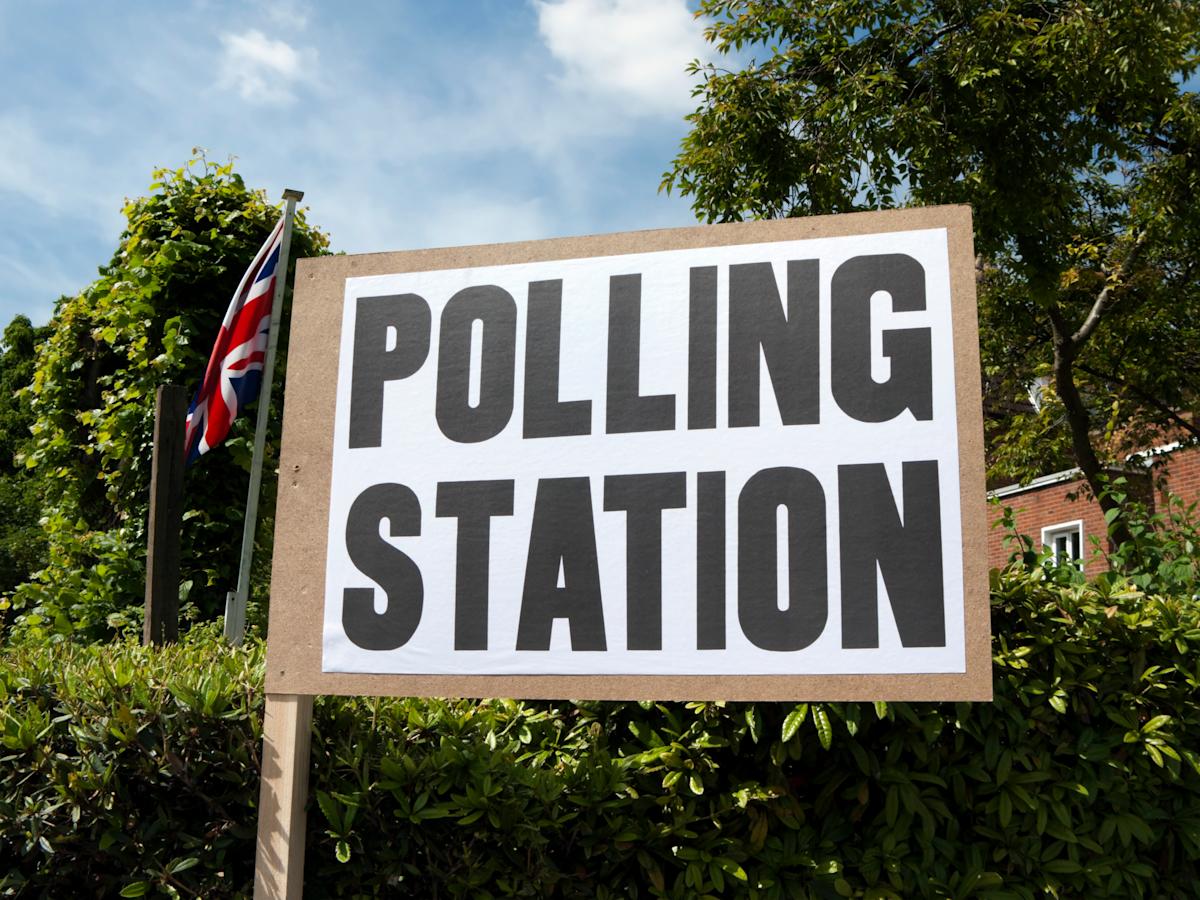Some 1,641 council seats are up for grabs this week as local elections are held across 23 local authorities on Thursday.
It will be the first major electoral test for the UK’s political parties since last July’s general election, with Sir Keir Starmer’s Labour struggling to stay ahead of Nigel Farage’s Reform UK, according to recent polls.
The Tories too are under pressure from the rise of Reform, with one leading pollster suggesting the Conservatives could lose 500 seats on Thursday, with many Tory voters expected to opt for Farage’s party.
Luke Tryl, executive director at More in Common, told reporters that “disillusionment” is a “primary driver” ahead of the vote, while the founder of a political research firm recently told Yahoo News not to “underestimate the protest vote”.
With the electorate seemingly growing tired of the two main “establishment” parties, the Liberal Democrats and the Green Party will also be hoping to make inroads when voters go to the polls on Thursday.
Here, Yahoo News explains what this week’s vote will actually mean, what people will be voting for, and how local councils spend your money.
What is a local council?
Councils are responsible for running most public services at a local level, from schools to care of older people, from roads to rubbish, libraries and local planning.
They work with local people and partners, such as businesses or other organisations, to agree on and deliver local priorities, the Local Government Association explains, either providing services directly, in partnership with others, or commissioning them from a third party.
Since the Local Government Act 2000, councils have been responsible for the economic, social and environmental wellbeing of their areas.
2025 Local Elections Expected Declaration Times:
Probably best to get an early night on Thursday, with no councils expected to be fully in before 7am.
That being said, 4 of 6 Mayoral races are counting on the night, as well as the Runcorn & Helsby by-election. pic.twitter.com/8Wn1BAGAKd
— Election Maps UK (@ElectionMapsUK) April 27, 2025
The Localism Act 2011, along with more recent changes to the way that public health, welfare and the police are organised, have given councils more influence over the way their local area is managed, the LGA adds.
Most of the services councils deliver are mandatory, meaning they are required by law. Some of these functions are tightly controlled by central government, while others are left to councils’ discretion.
Thursday’s elections will see people voting for councillors to represent their own wards within their own local councils. Six mayoralties are also being contested.
While this vote is not directly related to Westminster, local elections are often viewed as a bellwether of a party’s popularity and performance at a national level.
What powers do local councils have?
Some parts of the country are under two tiers of local government: county councils at the higher level, and district, borough and city councils at a more localised level.
Others are under a unitary system, where one council provides all of the local services. London boroughs and other metropolitan boroughs work under this system, along with unitary authorities in shire areas.
County councils are generally responsible for education, transport, planning, fire and public safety, social care, libraries, waste management and ensuring trading standards.
Meanwhile district, borough and city councils, which cover smaller areas, are responsible for services such as rubbish collection, recycling, council tax collections, housing and planning applications.
At an even more local level, you have parish, community and town councils, which in some cases operate under unitary as well as two-tier authorities, according to the government.
These councils can help with things such as allotments, public clocks, bus shelters, community centres, play areas and play equipment, grants to help local organisations and consultation on neighbourhood planning.
They also have the power to issue fixed penalty fines for things like litter, graffiti, fly posting and dog-related offences.
Full council meetings (a meeting of all council members) are held to approve all decisions, but in practice, most of the work is given to smaller groups of councillors or paid council officers.
You can view council meeting agendas, minutes and reports on your council’s website.
What do they spend their money on?
As you might have guessed, a large portion of councils’ funding comes from council tax, paid by you.
Spending will vary from council to council, but here, the Local Government Association has provided a breakdown of how £1 of council funding is typically spent (council spending on education services has been excluded).
The largest share (39%) is spent on adult social care, followed by children’s social care (22%), environmental and regulatory services (10%).
In 2023/24 less than 40% of councils’ total spend was left over for services such as street cleaning, waste collection and leisure centres.
Social care, both for adults and children, appears to have taken a larger share of council spending over time, according to this chart below summarising spending in 2013/14.
Research by the House of Lords, says the amount spent by local authorities on all services combined fell 10.4% between 2010/11 and 2019/20.
Councils have responded to funding pressures by redirecting funding towards statutory services, particularly social care, and away from non-statutory ones.
Spending on all services excluding social care (including non-schools education, highways and transport, cultural and related services and planning and development) decreased between 2010/11 and 2019/20, the Lords’ research says.
The paper adds that spending was “25% lower in real terms in 2019/20 than in 2010/11”.
Many local council provide information on their websites to show how they spend their budget, allowing people to view details on payments for goods and services over £500 and contracts and tenders over £500.
Every year councils are required to open their detailed financial accounts to the public for 30 working days, the government says, and must publish details on this period on its website ad in local press.
This allows people to check spending under £500 via Freedom of Information Act requests.


